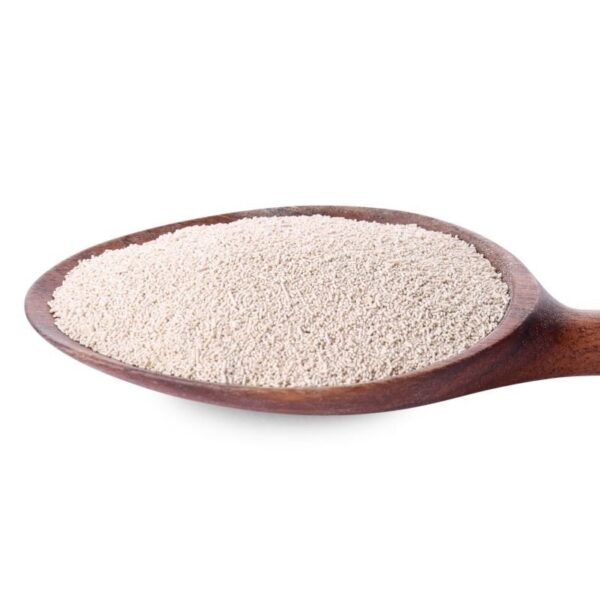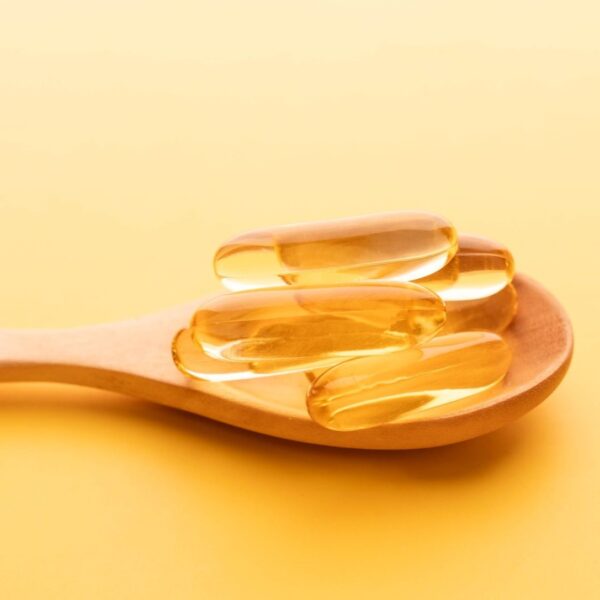Sunflower lecithin is a natural product extracted from sunflower seeds widely used as a wetting and emulsifying agent in the food industry. Due to its functional and nutritional benefits, sunflower lecithin has emerged as an excellent alternative to soy lecithin and egg lecithin in various food applications.
What is Sunflower Lecithin?
Sunflower lecithin is a mixture of phospholipids, glycolipids, and other lipids derived from sunflower kernels. One of the reasons it is so useful in food formulations is its amphiphilic nature — both hydrophilic and lipophilic. It can easily combine with water molecules and fat/oil molecules.
How is Sunflower Lecithin Produced?
Sunflower lecithin can be extracted mechanically from sunflower oil without requiring any solvents. This extraction method preserves the natural nutrients and antioxidants and the flavor and aroma of sunflower lecithin, making it more desirable.
Degumming can be done with water, organic acids/anhydrides, or enzymes. Water degumming separates variable amounts of phosphatides ranging from 80–95%. Oils high in nonhydratable phosphatides may require pre-treatment with phosphoric acid. The gums are hydrated to the point that they form gels and precipitate from the oil. The centrifuged product is dried and bleached. Over-drying causes dark-colored lecithin, whereas insufficient drying will produce a cloudy product. Lecithin can be deoiled using organic solvents as well.
Use of Sunflower Lecithin in Food Products
Sunflower lecithin is a natural emulsifier and stabilizer. It performs the following functions in food products:
| Emulsifier | Forms a surface layer around the fat and water molecules to create a uniform phase |
| Stabilizer | Prevents the separation of fat and water molecules, helping to keep the mixture stable |
| Texturizing Agent | Makes the mixture more cohesive, improving the texture |
| Wetting Agent | Used to improve the wetting properties of powdered foods |
| Food Supplement | Rich source of essential fatty acids, antioxidants, and choline |
Applications in the Food Industry
Sunflower lecithin is used in various food products, including baked goods, dairy products, processed meats, and meat analog products:
| Function | Applications |
| Emulsifier | Breads, Cookies, Crackers, Cakes, Donuts, Pizza, Flatbreads, Tortillas, Confectionery, Dairy-Based Beverages, Protein Beverages, Juices, Ice Cream, Milk-Based Desserts, Vegan Meat and Dairy Products, Sauces, Fillings |
| Stabilizer | Breads, Cookies, Crackers, Cakes, Donuts, Pizza, Flatbreads, Tortillas, Confectionery, Dairy-Based Beverages, Protein Beverages, Juices, Ice Cream, Milk-Based Desserts, Vegan Meat and Dairy Products |
| Texturizing Agent | Vegan Meat and Dairy Products |
| Wetting Agent | Sauces, Fillings, Gravies |
| Viscosity Modifier | Confectionery, Dairy-Based Beverages, Protein Beverages, Juices |
Properties of Sunflower Lecithin
| Physical Form | Liquid, Powder, Granules |
| Color | Pale Brown to Yellow |
| Odor | Bland, Fatty |
| Storage Temperature & Conditions | 2-8°C |
| Viscosity @ 25°C | ~20,000 cP varies |
| Specific Gravity at 25 °C | 1.03 -1.05 |
| HLB Value | 3-5 and more |
| Solubility | Soluble in chloroform, ether, and petroleum ether. Insoluble in acetone. |
| Claims (*Product Specific) | Non-GMO*, Natural*, Organic*, Soy-Free*, Allergen-Free* |
Typical Formulations
Cocoa Cream
Here is an example of a cocoa cream formulation table with sunflower lecithin, along with the % weight of ingredients:
| Ingredient | Composition % |
| Powdered sugar | 50 |
| Vegetable fat | 24 |
| Refined Sunflower oil | 6 |
| Cocoa powder | 7 |
| Milk Powder | 12 |
| Lecithin | 0.3-0.7 |
| Flavor | 0.1 |
Source: ScienceDirect
Pan Bread
Here is an example of a pan bread formulation table with sunflower lecithin, along with the % weight of ingredients:
| Ingredient | Composition % (Flour basis) |
| Bread flour “Fortuna” (Protein content > 11.4 %) | 100 |
| Water | 65 |
| Sugar | 5 |
| Yeast, fresh | 4 |
| Soy oil | 2 |
| Skimmed milk | 2 |
| Salt | 2 |
| Sunflower lecithin | 1.75 |
Source: MasterMilk
Sunflower Lecithin Formulation Considerations
| Physical Forms | Powder, Liquid |
| Stability | Stable but sensitive to light, heat, humidity, and gas. Incompatible with strong oxidants. |
| Dosage | 0.05 to 2.0 or more, depending on the application |
| Interaction with Other Components | Salt content above 2% may affect lecithin functionality. Lecithin is most effective in formulas with a pH above 4. Incompatible with strong antioxidants. |
Effect on Functional Properties of Food
| Consistency | Lecithin provides rapid and complete wetting of powders into aqueous systems. When using low-fat powders, lecithin products with a lower HLB value must be selected to retard the wetting rate. Hydrophilic (higher HLB) lecithin products promote the wetting of fatty powders. Smaller particles, with larger surface area, may require up to 2% lecithin, whereas improved wetting properties of larger particles can be accomplished at up to 0.25%. |
| Wettability | Lecithin provides rapid and complete wetting of powders into aqueous systems. When using low-fat powders, lecithin products with a lower HLB value must be selected to retard the wetting rate. Hydrophilic (higher HLB) lecithin products promote the wetting of fatty powders.Smaller particles, with larger surface area, may require up to 2% lecithin, whereas improved wetting properties of larger particles can be accomplished at up to 0.25%. |
Variants of Sunflower Lecithin
Lecithin can be chemically modified to achieve various functional properties. The separation or “fractionation” of complex lecithin mixtures can create new products with functionality optimized for specific applications. Special grades of lecithin may include other elements, such as refined oils or other surfactants. Here are three common variants of sunflower lecithin.
Hydroxylated Lecithin
Hydroxylation involves the insertion of hydroxyl groups at the double bonds of unsaturated fatty acids present in phospholipids using hydrogen peroxide under the catalytic action of water-soluble aliphatic carboxylic acids (e.g., lactic acid, acetic acid, tartaric acid, citric acid). It is an effective way to improve water dispersibility or enhance emulsifying properties of vegetable lecithin for the o/w system.
Acetylated Lecithin
To achieve both hydration and water dispersibility, the degree of either acetylation or hydroxylation has to be high. Acetylation is achieved by treating the wet gums with 1–3% acetic anhydride and then drying (1% moisture) under a vacuum.
Enzymatically Modified Lecithin
Enzyme-catalyzed reactions like hydrolysis and esterification are carried out to improve the dietetic properties of natural lecithin. Two primary groups of enzymes are used: phospholipase and lipases. The function of phospholipase is to hydrolyze lecithin to lysolecithin, which improves the emulsifying capacity and heat stability.
Safety & Regulatory Considerations
| FDA Information | Sunflower lecithin is approved for use in food products by the US Food and Drug Administration (FDA). It is generally recognized as safe (GRAS) and used in various food products as an emulsifier. |
| FAO | The acceptable daily intake per FAO is 50 mg per kg bodyweight. |
| EU Information | Lecithins (E 322) is an authorized food additive in the EU. |
| Other Regulatory Information | It is approved to be used in food products by Health Canada, the European Food Safety Authority (EFSA), and the Japanese Ministry of Health, Labor, and Welfare & FSSAI (India). |
Nutritional Properties of Sunflower Lecithin
Lecithin consists of a phospholipid composition of 43.1% (16.2% phosphatidylcholine, 16.5% phosphatidylinositol, 5.3% phosphatidylethanolamine, 5.1% minor phospholipids), 23.5% other compounds (glycolipids, complex carbohydrates), and 33.4% oil.
Sunflower lecithin is a rich source of the following nutritional components:
- Essential fatty acids: It is high in linoleic acid, oleic acid, palmitic acid, and stearic acid, important types of fats that are necessary for the proper functioning of the body.
- Antioxidants: It is rich in tocopherols, phytosterols, and other phenolic compounds, which can help to protect cells from damage caused by free radicals.
- Choline & Phosphatidylcholine: These are essential nutrients for many critical bodily processes, including cell membrane maintenance, nerve signal transmission, metabolism, memory, and learning.
Health Effects of Sunflower Lecithin
Sunflower lecithin benefits human health due to its positive impact on the human body’s metabolism. Some of these potential benefits include:
- Reduction in cholesterol levels
- Immunomodulatory effect
- Hepatoprotective effect
- Improvement in memory and cognition
- Improvement in wound healing
- Promotion of joint & bone health
Identification Numbers
| Chemical Name | Lecithin |
| CAS Number | 8002-43-5 |
| EC Number | 232-307-2 |
| E Number | E 322 |
| INS No. (Food Additive) | INS 322 |
Fun Facts About Sunflower Lecithin
- Sunflower lecithin is an excellent alternative for people with soy allergies or who want to avoid genetically modified organisms (GMOs).
- Sunflower lecithin has superior emulsifying properties compared to soy lecithin. It can stabilize mixtures of oil and water.
Additional Resources
- Sunflower Lecithin vs. Soy Lecithin: What’s the Difference? – National Lecithin
- Nutrition Facts: Calories, Protein, Carbs, Fat – Now Foods Sunflower Lecithin Pure Powder
- Food Lecithins – Fismer Lecithin
- Lecithin Applications in Food – American Lecithin
- Extraction and Characterization of Lecithin from Sunflower Seeds
- Lecithin and its Applications in the Confectionery Industry
- Properties and Application of Lecithin in Food Industry









